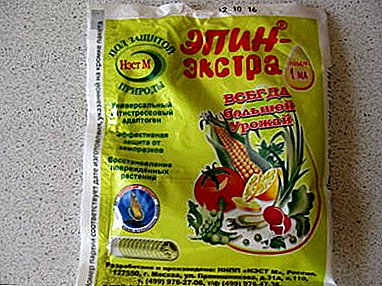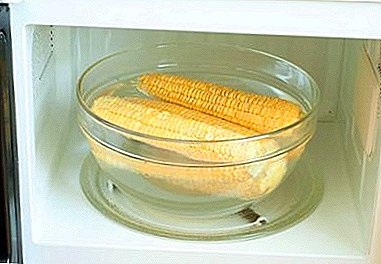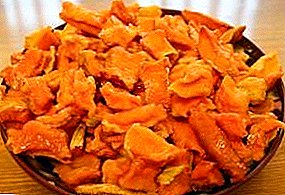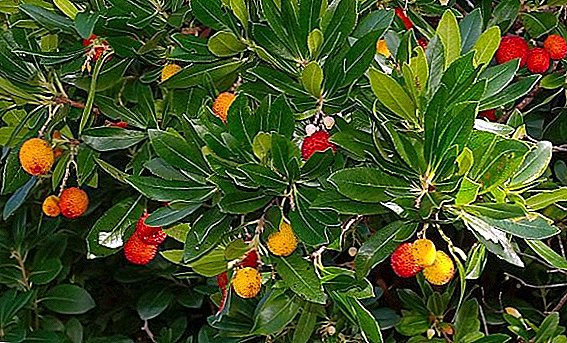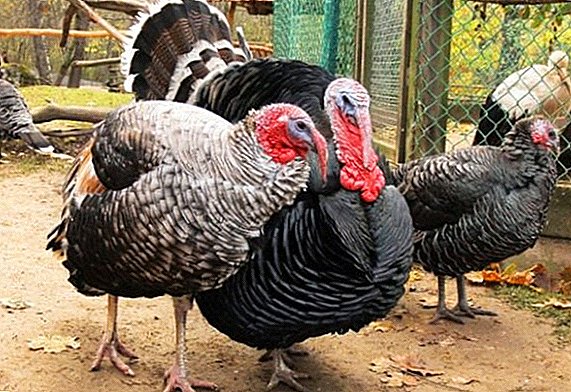 Turkeys, like other birds, are subject to the influence of various pathogenic factors - mechanical injuries, the effects of toxins and pathogens, stress, etc. Each disease is characterized by its typical clinical symptoms. To reduce losses from turkey disease, it is important to know and be able to recognize the manifestations of certain diseases in time.
Turkeys, like other birds, are subject to the influence of various pathogenic factors - mechanical injuries, the effects of toxins and pathogens, stress, etc. Each disease is characterized by its typical clinical symptoms. To reduce losses from turkey disease, it is important to know and be able to recognize the manifestations of certain diseases in time.
How to distinguish a healthy turkey from the patient
The main signs of a sick bird:
- low activity - a turkey sits a lot, falls when trying to get up;
- decrease in social activity - the bird does not contact with the flock and is killed in a secluded place;
- painful appearance - turkey staggers, wings lowered;
- feathers - ruffled, dull, dirty, there are bald patches;
- eyes - painful, sunken, dull.
Contagious diseases
Contagious are all diseases in which the pathogen is transmitted from one bird to another. Wildlife birds, rodents, insects can bring the pathogen into the house.
At the same time relatives and wild birds can be carriers of the disease, and rodents and insects, including parasites, are carriers of infections. Most bacteria and viruses are transmitted through contact with bedding, feces, food and drink from an infected individual to the rest.  Common signs of infectious diseases:
Common signs of infectious diseases:
- lethargy and apathy;
- wings down, turkey hides his head under the wing;
- discharge from the eyes and nose is possible;
- diarrhea may occur;
- mucosa may be inflamed or covered with a rash.
We advise you to read about what breeds of turkeys can be bred at home, how to achieve high productivity of turkeys, how much turkeys and adult turkeys weigh, how to distinguish a turkey from a turkey, as well as how to improve turkey egg production.
Correctly diagnose an infectious disease can only be a veterinarian, conducting a study of a sick turkey or his carcass. In no case do not throw away the internal organs of the sick bird - they can help the doctor in establishing an accurate diagnosis.
As a rule, infectious diseases in poultry have one treatment regimen:
- sick turkeys are recycled;
- healthy birds are treated with a course of antibiotics;
- vaccinated;
- house and walking yard are disinfected.

Helminthiasis (helminthic invasions)
Helminthiasis occurs in all types of poultry. The source of infection can be soil, feces, water, etc. Warm and humid weather contributes to an increase in contact with the carriers of helminths - insects and worms.
We recommend to read about how to remove worms in chickens.
It is impossible to determine the fact of infection and the type of worms by the appearance of the turkey. Therefore, successful treatment requires the results of laboratory analysis, which will help the veterinarian confirm or refute the infection and prescribe the necessary treatment. 
Symptoms of infection can be:
- apathy;
- the chicks squeak restlessly and drink a lot;
- there is a sharp loss of body weight;
- growth retardation;
- diarrhea greenish color;
- loss of feather at the anus;
- thinning of the eggshell or the presence of irregularities on it, bumps.
Learn how to grow turkeys in an incubator, as well as how to properly feed the poults.
As preventive measures recommended:
- reduce the time the turkeys stay on the run immediately after the rain (at this time there is a maximum of earthworms near the soil surface);
- carry out regular deworming in birds and disinfecting the house;
- manure should be cleaned regularly.
 Treatment
TreatmentFor deworming turkeys give "Fenbendazol", which is a universal drug against various types of parasites. The drug is calculated in the amount of 7.5 mg per 1 kg of live weight and added to the morning food for complex treatment. Slaughter of birds is allowed 14 days after treatment with the drug.
Important! In the world there are about 300 species of helminths, of which about 50 can parasitize in poultry. Pumpkin seeds in the turkey diet act as a natural anthelmintic drug.
Histomoniasis
Histomoniasis pathogens are the simplest microorganisms that infect the liver and intestines. Most susceptible to the causative agent of turkey poults. The source of infection may be food.  The causative agent does not survive in a free environment, but it exists perfectly for a long time in transit hosts — worms eggs, earthworms, flies, in a litter that has survived from an infected bird. The disease has several stages: acute, subacute and chronic.
The causative agent does not survive in a free environment, but it exists perfectly for a long time in transit hosts — worms eggs, earthworms, flies, in a litter that has survived from an infected bird. The disease has several stages: acute, subacute and chronic.
Symptoms of the disease:
- depletion of the body;
- diarrhea;
- intoxication;
- development of peritonitis.
Did you know? Maya Indians domesticated wild turkey. In their mythology, the bird was associated with the god of rain because turkeys always restlessly behave before a storm or a hurricane.In the acute phase of turkey poults:
- wings fall;
- no appetite;
- skin on the head becomes bluish color;
- diarrhea begins;
- marsh-green feces with a sharp unpleasant odor;
- the turkey closes his eyes and hides his head under the wing.

The duration of the disease in the acute phase is 1-3 weeks. The peak of the incidence is at the beginning of summer and is associated with an abundance of insects that are eaten by young.
Treatment
For the treatment used "Metronidazole", which is added to the mash in a dosage of 1.5 g per 1 kg of feed. The drug can be dissolved in water and instilled into the bird's beak at the rate of 0.1 mg per 1 kg of bird weight. Course duration - 7 days, with daily intake of the drug.
Check out the breeds and crosses of turkeys for home breeding.
The next 7 days "Metronidazole" is added to food 1 time in 2 days. The prognosis of treatment depends on the state of the population before the disease. Strong turkey poults with a stable immune system will take the disease easier. In a weakened livestock mortality can reach 70-90%.  Meat of slaughtered poultry should be subjected to heat treatment when eaten. The insides cannot be eaten by people or animals. Of all poultry, histomoniasis is dangerous for turkey poults. Therefore, it is possible to transfer chicks to the poultry house where other birds lived before them, only after disinfection and replacement of equipment.
Meat of slaughtered poultry should be subjected to heat treatment when eaten. The insides cannot be eaten by people or animals. Of all poultry, histomoniasis is dangerous for turkey poults. Therefore, it is possible to transfer chicks to the poultry house where other birds lived before them, only after disinfection and replacement of equipment.
Smallpox
Turkeys are very sensitive to the smallpox virus. The disease can affect from several birds to the entire population, depending on the strength of the virus. Smallpox can exist in the house for about 180 days. Inside the house can get a virus from the outside at any time of the year. Its carriers are domestic and wild birds, as well as rodents.
In the summertime, a smallpox cutaneous form is recorded - in the form of nodules on the scalp. In winter, the disease affects the mucous membranes. The susceptibility of the body to smallpox is associated with a weakened immune system and a lack of vitamin A. The duration of the disease is 6 weeks.  Symptoms of smallpox:
Symptoms of smallpox:
- defeat of the skin of the head and mucous membranes, red inflamed areas are formed on the skin, which then turn into nodules of different sizes;
- eyelid mucosa is inflamed: eyes are watering, swollen, photophobia develops, purulent crusts form;
- a rash is observed in the stomach, mouth and larynx.
Read more about such breeds of turkeys as Uzbek fawn, big 6, black Tikhoretskaya, white and bronze wide-breasted.
Vaccination against smallpox is carried out in youngsters from 7 weeks.
Vaccine manufacturers:
- Russian - VGNKI;
- French - CT Diftosec;
- German - TAD POX vac;
- Dutch - Nobilis Ovo-Diphtherin;
- Israeli - FOWL POX.

When identifying infected with smallpox turkeys, patients are disposed of, the rest of healthy individuals are vaccinated. Immunity develops 10 days after vaccination. The house is treated with a 20% solution of hydrated lime.
Paratyphoid
The causative agent of the disease is salmonella. The source of contamination can be food, household items, infected territory and carriers of infection - recovered turkeys, sick birds, rodents. The most common disease is duck and goose flesh from 2 to 6 weeks of age. The disease has an acute, subacute and chronic form.
Symptoms of acute paratyphoid:
- lethargy, low mobility of a bird;
- the wings of a turkey are lowered, feathers are ruffled;
- watery eyes, possible purulent discharge, from which the eyelids stick together;
- turkey falls on his back;
- the feathers around the cloaca are smeared with feces;
- possible diarrhea green.

The acute form can result in the death of a turkey in 1-4 days. In the subacute form, inflammation occurs - inflammation of the joints, lungs, etc.
Subacute stage lasts up to 10 days. During this time, 50% of the diseased young die. If the bird has survived these 10 days, then the disease turns into a chronic stage with the development of paralysis of the limbs and exhaustion.
Did you know? Typhus in Greek means smoke fog This designation was applied to diseases that were accompanied by a disorder of consciousness. The first scientifically proven epidemic involving parathyphoid bacteria occurred in 430 BC. e. in ancient Athens.Treatment
Treatment of paratyphoid complex. It necessarily includes both the drug component and the general sanitary measures and the appointment of immunomodulators. Disinfection of the walking yard and the floor of the house is carried out as a preventive measure.  Sick individuals are injected with anti-parathyphophic serum intramuscularly at the rate of 2.5 ml per 1 kg of turkey weight. Biomitsin hydrochloride, 5-10 mg per 1 kg of weight, is added twice daily to food for 5-6 days. Instead of ordinary water, for 5-6 days they give to drink an aqueous solution of "Furacilin" (1: 5000).
Sick individuals are injected with anti-parathyphophic serum intramuscularly at the rate of 2.5 ml per 1 kg of turkey weight. Biomitsin hydrochloride, 5-10 mg per 1 kg of weight, is added twice daily to food for 5-6 days. Instead of ordinary water, for 5-6 days they give to drink an aqueous solution of "Furacilin" (1: 5000).
Pullorosis
Pulloz is an infectious disease affecting the intestines of turkey poults and the reproductive system in turkeys. The national name of the disease is bird fever. The causative agent is a bacterium from the Salmonella group. Infection occurs from infected birds and through droppings. The most susceptible to disease are turkeys and chickens.
Symptoms of the disease:
- increased body temperature;
- the bird looks sleepy, long sits in one place;
- feathers ruffled;
- mucous membranes turn red;
- nasal cavity filled with mucus;
- the bird shakes its head and tries to wipe the mucus about the feathers;
- appetite reduced;
- increased thirst;
- white diarrhea.

In adult turkeys, the disease can be asymptomatic. Like most infectious diseases, there are acute, subacute and chronic forms. The disease affects chicks up to 5 days old. In chicks that are more than 45 days old, the disease can manifest itself in individuals.
Treatment
As part of the fight against the disease, sick chickens are killed and healthy people are treated and prevented with nitrofuran preparations, for example, they are added to the feed "Furidin" at a dosage of 200 mg per 1 kg of bird weight for 10 days.
Newcastle disease
Newcastle disease or pseudo-avian birds is a dangerous viral disease that affects members of the chicken family. The disease is accompanied by pneumonia and encephalitis. The causative agent of the disease is paromikrovirus, transmitted by air, as well as through water, food, in contact with sick individuals, rodents, parasites.  Virus can be any creature in contact with the zone of its spread. At the same time, the virus retains its activity for up to 4 weeks. Infection has the character of epidemics, in which from 60 to 90% of birds die.
Virus can be any creature in contact with the zone of its spread. At the same time, the virus retains its activity for up to 4 weeks. Infection has the character of epidemics, in which from 60 to 90% of birds die.
Learn more about how to treat Newcastle disease in chickens.
In the acute phase of the disease (1-4 days), the turkey can die instantly. At the same time to identify the virus in the carcass of a dead bird is quite difficult. Over the next week, the subacute phase is undergoing with the development and deepening of the disease.
Symptoms:
- fever;
- inactivity;
- corneal opacity;
- accumulation of mucus in the cavities of the nasopharynx;
- the turkey tries to reject mucus, so coughs and breathes, opening the beak;
- breathing hard;
- diarrhea with feces of green color, possibly mixed with blood;
- unsteady gait with developing limb paralysis;
- convulsions;
- internal hemorrhage.
 There is no effective treatment against pseudo-pills. Therefore, all sick birds must be destroyed and disposed of. To reduce the likelihood of the disease, vaccination of healthy livestock is used.
There is no effective treatment against pseudo-pills. Therefore, all sick birds must be destroyed and disposed of. To reduce the likelihood of the disease, vaccination of healthy livestock is used.Preventive measures:
- disinfection of poultry houses;
- Quarantine compliance for new turkeys.
Important! For the treatment of Newcastle disease for birds of rare breeds used injections. "Katozala" intramuscularly in the pectoral muscle 0.3 ml 1 time per day. Treatment can take from 2 weeks to 6 months.
Tuberculosis
Tuberculosis of birds is one of the most contagious diseases. The causative agent of the disease is Mycobacterium tuberculosis avium. The microorganism infects the cells of the liver, spleen, muscle tissue. The main source of infection is the manure of sick birds. In addition, turkeys and geese may be infected by an aerogenic route.  Symptoms of the disease:
Symptoms of the disease:
- the sick bird is passive, eats little, quickly loses weight;
- dirty feathers;
- due to the defeat of the joints, the turkey often falls, prefers to sit, and paralysis of the limbs gradually develops;
- lesions of the internal organs are manifested by tumors that can be felt on palpation;
- turkey egg production decreases and stops in a month;
- the bird feels weak, the mucous membranes are pale, the skin has an unhealthy shade.
If a sick individual is not detected in time and measures are not taken, then the death of the livestock may amount to 100%. Poultry for tuberculosis is not treated.
The doctor may prescribe antibiotics with a course of more than 5 months, but it is much more practical to take measures to save a healthy herd:
- To detect tuberculosis, turkeys are tested for tuberculin: if an inflammatory process occurs at the injection site, this means that the bird was in contact with the pathogen.
- A conditionally healthy flock (with a negative tuberculin test) is disconnected from the main one and transferred to a new room with the installation of new equipment - drinking troughs, feeders, nests.
- The house is disinfected with bleach (3%). Solution consumption - 1 l per 1 sq. m
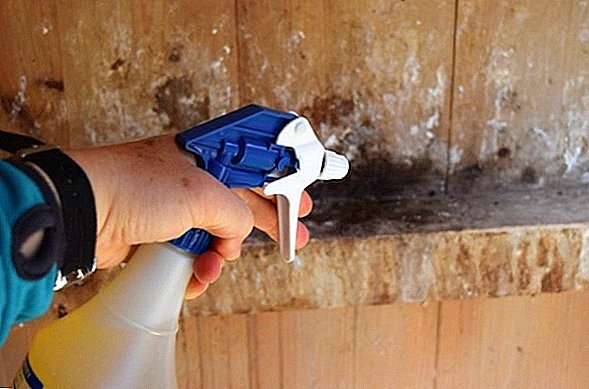
- Potassium iodide and copper sulphate are added to the diet.
- Drugs that will be introduced into the diet, negotiate with the doctor. Antibiotics are prescribed based on the actual state of the turkey herd.
- Walking for turkeys with a negative and positive reaction to tuberculin should be separate from each other.
The causative agent of the disease can persist for more than 1 year in soil, manure, bedding, nests. It is proved that the sun's rays destroy the pathogen in 50 minutes, and the effect of temperatures above +70 ° C will cope with it in 10-15 minutes.
Sinusitis (respiratory mycoplasmosis, contagious rhinitis)
The cause of the disease lies in the increased humidity (more than 80%) in the house with the onset of cold weather. The disease is caused by the bacterium Mycoplasma pneumoniae, which is transmitted by airborne droplets.  The main source of infection is contact with sick birds, including wild birds. Mycoplasma binds to the cells of the mucous membrane and damages the epithelium, which further leads to disruption of intercellular bonds.
The main source of infection is contact with sick birds, including wild birds. Mycoplasma binds to the cells of the mucous membrane and damages the epithelium, which further leads to disruption of intercellular bonds.
Read more about what and how to treat sinusitis in turkeys.
Symptoms of the disease:
- runny nose;
- decreased appetite;
- rapid weight loss;
- reduced egg production;
- soreness of mucous membranes;
- fever;
- rash.
Treatment
For the treatment of the disease, a course of antibiotics is prescribed: “Oxytetracycline” or “Chlortetracycline” at the rate of 400 g and 1 ton of food. Youngsters affected by the disease are usually slaughtered by farmers, since the bacterial damage caused by the bacteria is very large.
Video: turkey treatment for sinusitis And after recovery, these are weakened turkey poults, more prone to illness than others. Adult birds can be treated with intramuscular injections of antibiotics.
Non-contagious diseases
Non-contagious diseases are evidence of poor diet or poultry. The treatment of such pathologies consists in eliminating the causes of the disease. Such pathologies have no common symptoms.
Hypovitaminosis
The term "vitamin deficiency" refers to the absence in the body of a single vitamin.
The reason for this phenomenon may be:
- low content of vitamins in food;
- the predominance of some elements in the absence of others;
- helminthic invasions;
- treatment with antibiotics, sulfonamides.

Symptoms of hypovitaminosis:
- lack of vitamin A - manifested in the thickening of the mucous membranes, dry skin;
- lack of vitamin D - leads to rickets and lagging chicks in development;
- lack of B vitamins - leads to disruptions in the work of various body systems;
- Vitamin C deficiency is a general weakness of the body, anemia, increased susceptibility to viral infections.
Treatment is carried out as a change in diet, and the additional introduction of multivitamin preparations in turkey feed. Well restock vitamins in the body of carrots, beets, greens, hay, pine meal. For the prevention of rickets in the diet include chalk, egg shells, crushed bones. 
Pica
Perverted appetite manifests itself in eating inedible or conditionally edible substances - stones, clay, bedding, etc. May be a sign of helminthic invasion, and also indicate a lack of any trace elements in the diet.
There is no medical treatment for a disease. It is recommended to revise the diet of turkeys and to balance it properly. If you do not change anything in the diet, it can lead to hard goiter or other diseases.
Did you know? The maximum recorded weight of a turkey is 39 kg. The record holder was Turkey Tyson, belonging to the breed of white broad-chested. Raised this giant English farmer Philip Cook.
Sagging goiter
Sagging goiter is a milder form of goiter than a solid one. It occurs due to the abundance of water in the diet and wet food, which lead to stretching of goiter. It is treated with a diet that is prescribed by a veterinarian, depending on the actual diet of the bird. A turkey in this state needs rest and reduced activity. 
Hard goiter
The name "hard goiter" accurately conveys the main symptom of the disease.
The problem occurs when several adverse factors coincide:
- abundance of solid food;
- exceeding the intake of solid feed;
- lack of small pebbles in the digestive system.
Since the turkeys do not have teeth, small stones, which serve as a shredder, are involved in the process of grinding food. If the food has nothing to grind, then it begins to accumulate in the goiter, causing pain.
Symptoms of the disease:
- hard-to-touch goiter;
- Turkey is passive and refuses to eat;
- goiter may be observed purulent discharge.

Treatment
Drug treatment of the disease does not exist. A sick turkey is cut, and the rest is added to a separate trough of small pebbles and the ratio of wet and solid feeds is changed.
It will be useful for you to read about how to make drinking bowls for turkeys, as well as how to build a turkey hen with his own hands.
Paw problems
Problems of development of the bone apparatus, lack of calcium can be the reason that the birds are very unstable and have weak leg muscles. If the poults do not have enough room for walking, this can also be the reason for the fall. In addition, the problem with the paws may occur due to their inverted.
If the turkey is unstable, but at the same time actively eats and looks cheerful, then the problem lies in the diet. If the bird looks sleepy, lethargic, hides in a secluded place, then this is a sign of infection.  Reversed leg joints are a sign of arthritis. In this case, swelling is observed around the joint.
Reversed leg joints are a sign of arthritis. In this case, swelling is observed around the joint.
For the treatment of arthritis, an aqueous solution of mummy is used at the rate of 0.4 mg per 100 g of bird weight. The solution is given instead of drinking for 10 days. A 5-minute rubbing of an 8% mumiyo solution into the inflamed joint is also used.
Did you know? Wild turkeys live in herds. At the same time males and females live in different herds. Couples these birds form only in the mating season.Vitamins B and D are additionally introduced into the diet of the bird. Cake is removed from the diet to reduce the fat content of the feed. The treatment of infectious diseases is prescribed depending on what diagnosis the veterinarian has made.

Preventive actions
To prevent disease, you should regularly carry out:
- visual inspection of the state of turkeys - daily during feeding;
- disinfection of the house with quicklime - once a month;
- dry change of litter - daily.
It is also necessary to provide turkeys with comfortable living conditions:
- the house should be dry, clean, without drafts;
- feeders and drinkers - washed;
- feed and water - fresh.
There should be enough wet feed in the feeder so that the birds have time to eat them in one go. If the feed stagnates, it leads to the proliferation of microbes and possible infection of birds. To combat skin parasites, install a ash bath from a mixture of sand and ash in the house. This will help the turkeys fight the lice.
Video: turkey disease prevention
The scheme of feeding poults from diseases
Turkey poults carry out prevention of infectious diseases, modulation of immunity, additional fortification.
The regimen of drugs is as follows:
- 1-5 days - for general prophylaxis of mycoplasmosis and bacterial infections they give the antibiotic “Baytril” 2 times a day (0.5 ml per 1 l of water);
- 6-10 day - for the prophylaxis of intestinal diseases apply "Furazolidone": 2 tablets per 0.5 l of water;
- 20-25 days - for improving immunity, they give “ASD-2” (2 ml per 1 l of water) 3 times a day;
- 33-34, as well as 58-59 and 140-141 days - for general prophylaxis, the Baytril antibiotic is administered 2 times a day (0.5 ml per 1 l of water);
- 40-45, as well as 65-74 days - for the prevention of histomoniasis, it is necessary to add "Metronidazole" to the drink (20-25 mg per 1 kg of live weight) once a day.

In addition, vitamins A, D, C are added to wet foods. The main objective of prevention is to prevent the development of incurable diseases and create an immune system that is resistant to pathogens in turkeys.
Turkeys are pretty unpretentious in content. Their cultivation is a profitable business, the success of which depends on the conditions of poultry housing and nutrition, as well as on the timely prevention of diseases.



